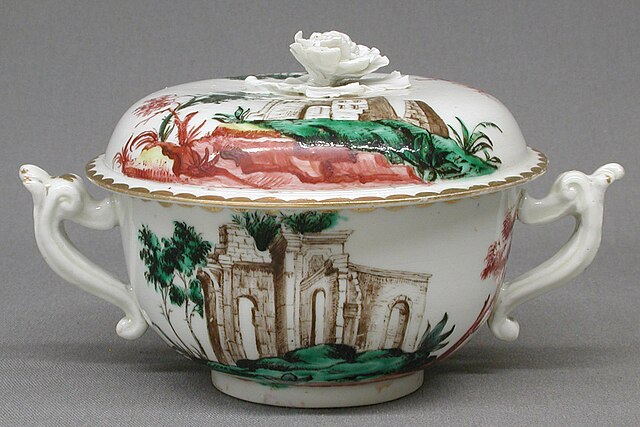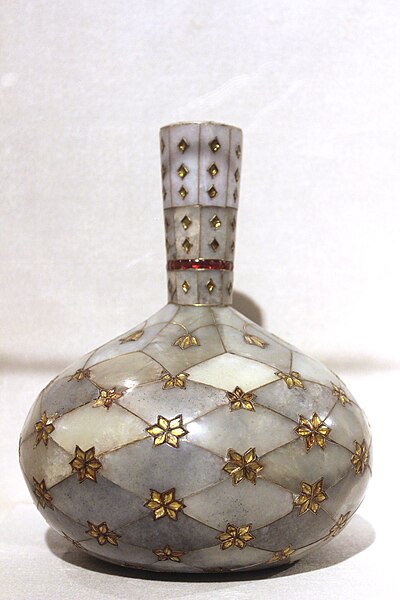In European academic traditions, fine art is made primarily for aesthetics or creative expression, distinguishing it from decorative art or applied art, which also has to serve some practical function, such as pottery or most metalwork. In the aesthetic theories developed in the Italian Renaissance, the highest art was that which allowed the full expression and display of the artist's imagination, unrestricted by any of the practical considerations involved in, say, making and decorating a teapot. It was also considered important that making the artwork did not involve dividing the work between different individuals with specialized skills, as might be necessary with a piece of furniture, for example. Even within the fine arts, there was a hierarchy of genres based on the amount of creative imagination required, with history painting placed higher than still life.
Self-Portrait with Two Circles by Rembrandt, c.1665–1669. Kenwood House, London
The Art of Painting; by Johannes Vermeer; 1666–1668; oil on canvas; 1.3 × 1.1 m; Kunsthistorisches Museum (Vienna, Austria)
The Tower of Babel; by Pieter Bruegel the Elder; 1563; oil on panel: 1.14 × 1.55 m; Kunsthistorisches Museum
Kazimir Malevich, Black Square, 1915, oil on linen, 79.5 x 79.5 cm, Tretyakov Gallery, Moscow.
The decorative arts are arts or crafts whose aim is the design and manufacture of objects that are both beautiful and functional. This includes most of the objects for the interiors of buildings, as well as interior design, but typically excludes architecture. Ceramic art, metalwork, furniture, jewellery, fashion, various forms of the textile arts and glassware are major groupings.
Le Nove porcelain, Bowl with cover, 1765–70, painted with ruins, soft-paste porcelain
The front side of the Cross of Lothair (c. 1000), a classic example of "Ars Sacra"
Wine Pot, c. 18th century, China, Walters Art Museum
Surahi, Mughal, 17th century CE. National Museum, New Delhi








